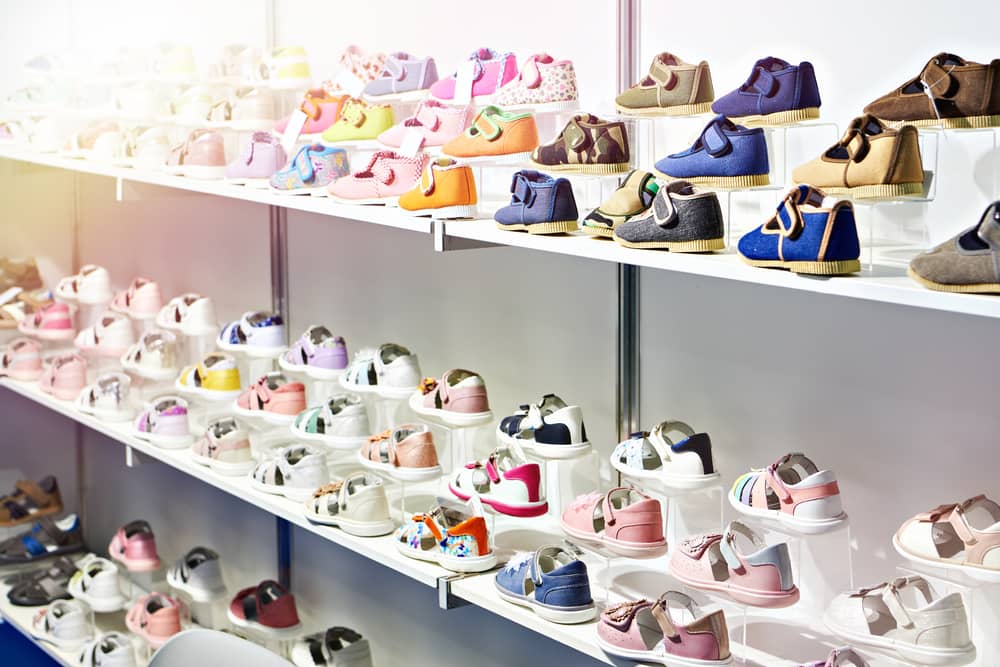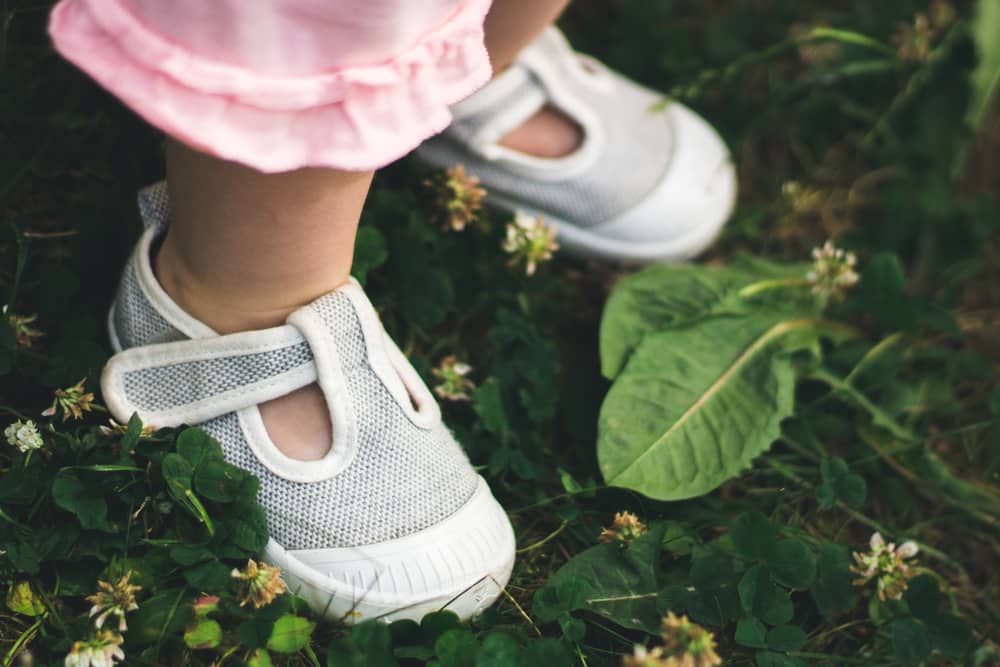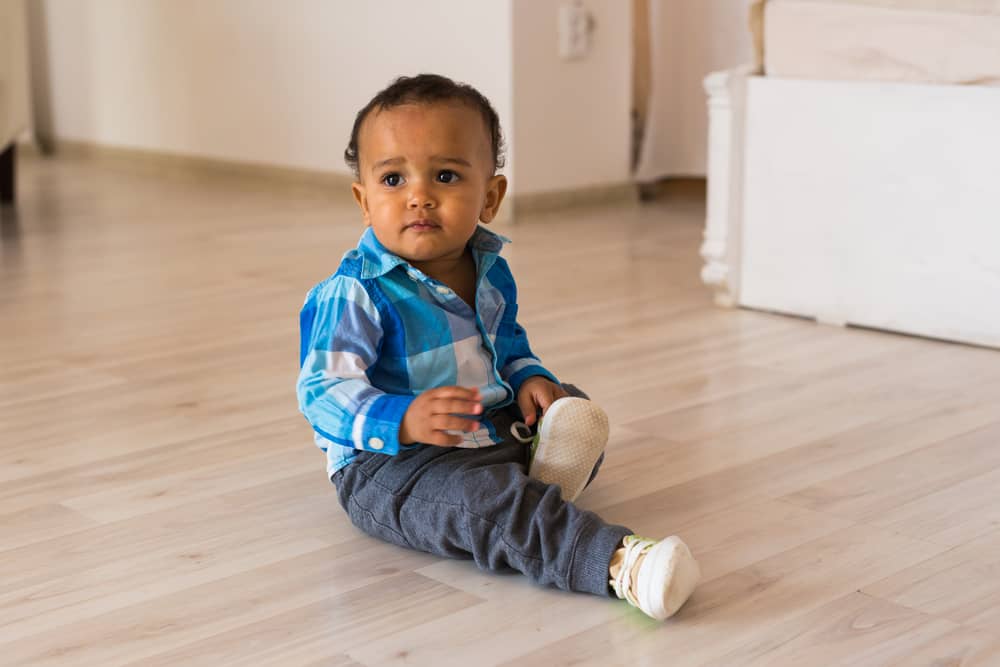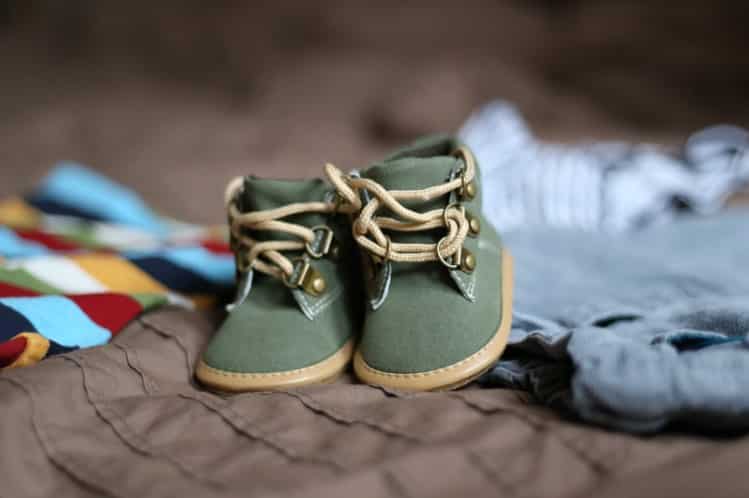Every aspect of your baby’s growth is important, including his/her shoe size. As a parent, right-sizing your baby’s leg is the most important factor in selecting the best pair of shoes for your little one. However, it is important to note that measuring your baby’s foot to get the right size requires diligence, skill, and a lot of patience.
Nevertheless, this is an important part of your baby’s developmental journey because getting the right shoe size would help your little one feel comfy and promote proper foot development.
In this article, you’d learn how to measure your baby’s foot, how to ensure your measurement is accurate, things to avoid when sizing your baby’s feet, and a few tips on buying.
Table of Content:
How To Measure Your Baby’s Feet
Measuring your baby’s feet is really simple.
This means that you can do it yourself. However, if you are not really sure, you can get your baby’s feet measured by a professional in a baby’s shoe shop.

If you want to measure your baby’s feet yourself, you will need:
- Blank paper
- A marker or pencil
- Ribbon or shoelace
In addition, you’d need a size guide to convert your measurements to the appropriate size. You can follow the steps detailed below:
Step 1:
Help your child to stand straight up on the blank piece of paper or against a wall with their back straight. It is better for the measurement to be taken while standing because the weight of the body pressed on the foot while standing influences the result you’ll get.

However, if your child is not old enough to stand by himself or herself, you may just have to measure while sleeping, and factor in a few inches.
Step 2:
Trace out the outline of the feet with a marker or pencil. Ensure you keep the marker at a right angle to get accurate results.
Also, if you are measuring your baby’s feet for the first time, you will need to measure both feet. This is because most times, the size of both feet differs and you’ll have to select the bigger size. You wouldn’t know the bigger one if you only measure one foot.
Step 3:
After tracing the length, move your child from the paper. You will then measure the length of the foot. This you do by measuring from the heel to the tallest point of the big toe. Write out whatever you measure and record as the length.
Step 4:
The next thing to do is to measure the width.
You can do this in two ways. First, you can either measure out the broadest part of the outline you got (the area around the ball of the foot). Second, you can place the ribbon or shoelace around the area and mark it out with the marker. Measure out what you marked and record the width.
Remember that you’re measuring for both feet!
Step 5:
After taking all your measurements, the next thing to do is to find the right size using your guide. Most shoe manufacturers include a size guide or provide one that you can easily print.
How to ensure your measurement is accurate
As soon as your baby has tried the new shoes on, you will need to confirm if the measurements you took are accurate. You can do this via the following means:
1. Visual check
By merely looking at your baby’s feet, you should be able to tell if the shoes are perfect or not. A perfect shoe will not leave marks on your baby’s feet. You can even turn the shoes upside down or inside out, if possible, just to ensure that they are the proper size.
2. Pinch test
Try and pinch some of the material between your fingers at the widest point. If you try and you can’t do it, then it means the shoe is too tight.
3. Finger Test
Put your pinkie finger between your baby’s heel and the back of the shoe. Your pinkie finger should fit perfectly into the shoe without extra space.
Things to avoid when sizing your baby’s shoes
1. Avoid hand-me-down shoes
Avoid giving your baby hand-me-down shoes, especially when he or she is still learning how to walk. This is because shoes mold to the child’s feet through use and hand-me-down shoes would have molded to the original wearer’s foot. This can cause irritation of some parts of the feet and may even cause your child to shift his or her weight incorrectly when walking.

2. Ignoring the foot size
Babies grow up so fast. You’d be surprised that they’ll outgrow that new pair of shoes in a couple of months. Monitor the growth of your baby’s shoe size by measuring the feet regularly to make sure that they do not outgrow the shoes.
Your baby may even give you some signs of outgrowth by taking the shoes off, rubbing their feet, or hobbling around. These are late signs that they’ve outgrown their shoes and need a new pair.
3. Avoid sticking to the exact measurement
After you’ve done all your calculations and you’ve gotten your exact baby shoe size, go for a slightly larger size. This gives your baby extra room to grow and also delays the time for you to get a new pair.
Also, you cannot be too sure that your measurements were accurate. A slightly larger shoe puts that into consideration.

Tips on buying shoes
- Avoid hard-soled shoes. They may look pretty but they don’t help your baby walk. In fact, they may delay your child from walking. Go for soft-soled shoes. When buying, try and bend the soles of the shoes. If the are bendable, then they are good, but if not, you may want to consider another pair.
- Go for a lightweight shoe. This helps your baby in walking. If the shoes are too heavy, they may find it difficult lifting their legs, making walking difficult.
- Bring socks along. When you’re going to purchase a new pair of shoes for your child, go with a pair of socks, this is because your child will likely wear socks with the shoes. It’s best to test and see that it’s perfect before paying. Also, use the appropriate socks, thick pairs for winter boots and thin pairs for summer sneakers.
- Ignore the trend. Following the trend and buying the latest clogs, boots or even heels will not be of help to your child who is just learning to walk. Rather, buy shoes that will help them master their walking ability.
Conclusion
Finally, it is a beautiful privilege to watch your little one grow into a happy, healthy child. With the tips in this article, you’d get all you need to measure your baby’s shoe size and get the best pair for your little one.
We are always here to help you.
References
Satarupa Mukherjee, Prithwish Roy, Souvik Mitra, Moumita Samanta and Sukanta Chatterjee (2013). Measuring New Born Foot Length to Identify Small Babies in Need of Extra Care: a Cross-Sectional Hospital Based Study. Iranian Journal of Pediatrics 23(5):508-12. Accessed on 13th November, 2021 from https://www.researchgate.net/publication/262076715_Measuring_New_Born_Foot_Length_to_Identify_Small_Babies_in_Need_of_Extra_Care_a_Cross-Sectional_Hospital_Based_StudyJOUR
Tanya Marchant, Jennie Jaribu, Suzanne Penfold, Marcel Tanner and Joanna Armstrong Schellenberg (2010). Measuring newborn foot length to identify small babies in need of extra care: a cross sectional hospital based study with community follow-up in Tanzania. BMC Public Health 10, 624. Accessed on 13th November, 2021 from https://doi.org/10.1186/1471-2458-10-624
Sundip H.Charmode and H.S.Kadlimatti (2019). Correlation of foot dimensions with body weight – A study in young population of central India. Translational Research in Anatomy. Volume 16, 100043. Accessed on 13th November, 2021 from https://doi.org/10.1016/j.tria.2019.100043

